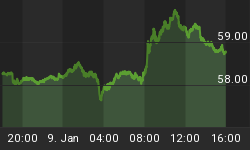Recent news reports highlight the difficulties some troubled borrowers are facing when trying to renegotiate payment and other terms with lenders. In many instances, the problems stem from the fact that the loans have been sliced, diced, and repackaged into mortgage-backed securities, which have then been sold to investors in the U.S. and around the world.
Aside from stymieing efforts to interact with final decision-makers, the shift to a securitization-based financing model has also reduced the flexibility and "human element" associated with the old-fashioned approach. Nowadays, lenders are much less interested and have little incentive to work with any one borrower -- out of the hundreds or more in an MBS "pool," for example -- than previously.
Unfortunately, these are not the only unintended -- and unwelcome -- consequences of the spectacular boom in securitized lending. The more serious downside threat stems from the systemic dangers this risk-shifting mechanism has introduced into the global financial framework.
Few would argue with the notion that sharing risk helps to cushion the blow from small "shocks." Unfortunately, shoveling layers and layers of myriad risks into every nook and cranny of the global financial system also boosts the odds that a "black swan event" -- an unexpected economic or financial rupture -- could bring down the entire house of cards. Some policymakers argue, in fact, that securitization ensures that large-scale upheavals will be anything but contained.
Some of the dangers emanating from the vast expansion in securitized lending derive from the incentives inherent to the current structure. Unlike with traditional financing arrangements, where profits accrue over the life of a loan, lenders nowadays expect to garner the bulk of their profits up front, in the form of fees and net proceeds from the sale of the obligations.
This has spurred a widespread emphasis on short-term profits at the expense of longer-term stability. Naturally, banks and other lenders focus on quantity rather than quality -- that is, the volume of loans they can originate and the amount of money they can realize up front, rather than borrowers' willingness and ability to repay the debt, long-term potential, or the broad banking relationship.
Distorted incentives have also promulgated "moral hazard," especially during a time of easy money. Strong demand from yield-hungry investors and an aggressive push by bankers to come up with the goods has caused standards to fall sharply. Together with the fact that risk is quickly passed along to others, the modern approach to lending has boosted bad credit-granting decisions to an unprecedented degree.
Consequently, when the credit cycle turns negative and the economy rolls over into recession -- if it hasn't done so already -- a far greater portion of outstanding loans will turn sour at a much faster pace than in the past, kick-starting a swirling snowball of defaults that will have a devastating knock-on effect throughout the economy and the financial system.
Securitization has also fostered moral hazard in other ways. Cheap financing, seemingly unlimited opportunities to garner high fees and short-term profits, a significant increase in global trading and arbitrage, and the complacency that normally accompanies periods of unusual stability have all helped to nurture the illusion that there will always be a market for any sort of tradable instrument.
That, in turn, has encouraged investors and speculators to buy and sell with near reckless abandon, concentrating in areas that seem to offer the juiciest returns, and following the herd into ever riskier investments -- with little regard for the downside. Believing that they will always have an "out," money managers have become entranced by securitization alchemy, buying any sort of rubbish as long as it has been sprayed with "eau de liquidity."
Compounding matters, many are unwilling to leave money on the table, or to take any defensive measures in advance of potential bad news. That means, of course, that everyone will be looking to do the same thing -- at the same time and with the same sense of urgency -- when circumstances turn for the worse, which guarantees that markets will lock up and losses will accelerate at an alarming rate.
For all the so-called disadvantages of owning "illiquid" investments -- as was the case when lenders made loans and held them until maturity -- managers took at least some steps to prepare in case things went horribly wrong. They knew, unlike the highly leveraged and asymmetrically rewarded financiers of today, that bad decisions would almost certainly have painful consequences.
Ironically, the absence of a visible market also dampens the angst and panic that results from seeing values evaporate on a computer screen. When volume dries up, spreads widen, and bids disappear altogether, many of today's new age investors will wish they had the luxury of known illiquidity, rather than being stuck with the ball-and-chain of illusory liquidity.
The expansion of the risk-shifting model has also had other ill effects. Historically, investors and policymakers have relied on the level of interest rates, risk spreads, and credit availability to gauge the pulse of Wall Street and Main Street. Securitization has distorted those signals, not least because the monetary policies of nations around the world, whether good or bad, flow readily from market to market, muddying the economic waters and undermining domestic policymaking efforts.
It would be hard to argue that securitized lending has not benefited society by boosting efficiency and enabling risks to be shared in a way that was not really possible before. Even so, the phenomenal expansion of the modern risk-shifting approach has had numerous unforeseen consequences. Experience suggests that too much of a good thing -- sunlight, fine wine, rich food, or, in this case, eau de liquidity -- usually turns out to be pretty bad.















